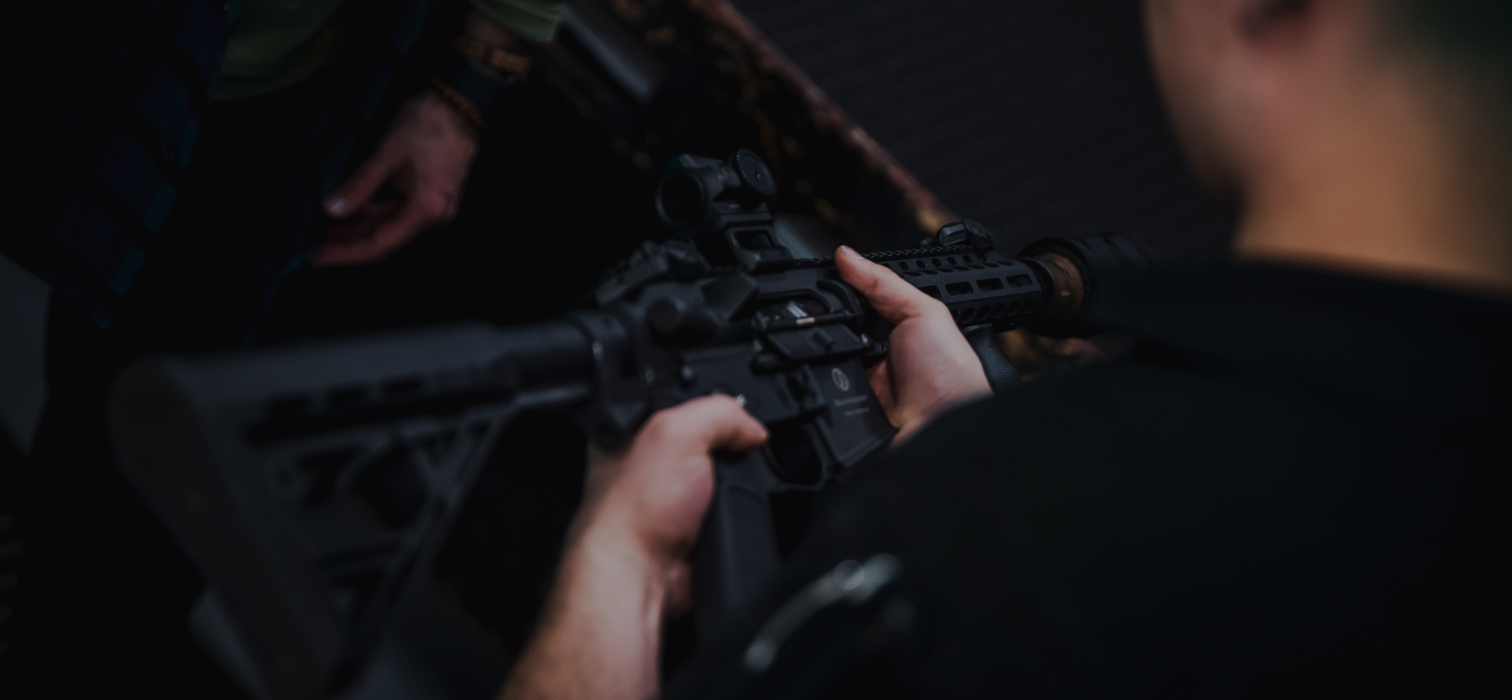
AK-74 

Assault rifles
Kč
Per hour for firearms license holders
400 Kč
For rental with an instructor + 10 shots
For rental with an instructor + 10 shots
Per hour for firearms license holders
| Calibre | 5,54 x 39 mm |
|---|---|
| Barrel length | 415 mm |
| Range | 100-1000 m |
| Weight | 3 kg |
| Magazine size | 30 |
| Country of origin | Soviet Union  |
AK-74 — The Modern Evolution of a Legendary Assault Rifle
Introduction: Modernizing a legend for the battlefield
The AK-74 is the evolution of the iconic AK-47, designed to meet new tactical demands — higher accuracy, reduced recoil, and more efficient ammunition logistics. It combined the ruggedness of the classic Kalashnikov with the ballistic advantages of a smaller, faster cartridge, becoming the backbone of many armies and armed groups from the 1970s up to the present day.
History and Development of the AK-74
After years of combat experience with the AK-47, Soviet military leadership sought ways to improve accuracy and reduce recoil impulse. Development during the 1960s–70s led to the adoption of the 5.45×39 mm cartridge and a rifle built around it. Officially adopted in 1974, the AK-74 was the work of Mikhail Kalashnikov and his design team. They followed the global trend of shifting toward smaller, higher-velocity rounds, aiming to deliver a rifle as reliable as the AK-47 but with superior controllability and extended effective range.
Design and Technical Features (what they mean in practice)
Caliber: 5.45×39 mm
Practical effect: lighter ammunition means reduced recoil, a flatter trajectory, and the ability to carry more rounds for the same weight. This translates into better control in automatic fire and more consistent accuracy at medium ranges.
Barrel and Ballistics
The AK-74 features a revised barrel and chamber optimized for its smaller caliber. In practice, this results in higher muzzle velocity and tighter shot groups out to about 300 meters.
Reliability
Just like the AK-47, the AK-74 retained the Kalashnikov reputation for extreme durability. In the field, it functions reliably in dust, mud, and extreme temperatures with minimal maintenance.
Weight and Ergonomics
The lighter cartridge and updated components make the rifle easier to carry and handle. Soldiers benefit from less fatigue and improved precision during sustained fire.
Practical Use: Where the AK-74 Excels
Infantry rifle: ruggedness and simplicity make it ideal for mass deployment.
Urban combat: lower recoil and flatter trajectory make it more effective for quick engagements in built-up areas.
Logistics: lighter ammunition improves combat load efficiency for soldiers.
Training: simple design shortens training time and reduces maintenance burdens.
Geopolitical and Historical Context
Adopted by the Soviet Army in 1974, the AK-74 quickly spread to Warsaw Pact nations and other Soviet allies. It played a significant role in late Cold War conflicts, including Afghanistan, and was later used in Chechnya and other post-Soviet conflicts. The switch to 5.45×39 mm reflected a doctrinal shift: prioritizing lighter loads, higher controllability, and sustained firepower for frontline troops.
Cultural and Pop-Culture Significance
The AK-74 inherited the symbolic status of the AK-47, embedding itself in the visual identity of conflicts since the 1970s. It appears across literature, films, and video games, often associated with Soviet and post-Soviet wars. In cultural memory, it represents modernization within the Soviet doctrine: a smaller round and lighter weapon adapted to modern combat needs.
Variants and Evolution
AK-74 — the standard rifle introduced in the 1970s.
AKS-74 — folding stock variant for airborne and vehicle crews.
AKS-74U — ultra-compact version with a very short barrel, often classified as a carbine.
AK-74M — modernized version (from 1990) with black polymer furniture and improved durability.
Further evolution — later iterations include rails, optics compatibility, and ergonomic updates. The AK-12, introduced in 2018, continues the lineage into the 21st century.
Pros vs. Cons
Advantages
Disadvantages
FAQ — Frequently Asked Questions
How does the AK-74 differ from the AK-47?
The AK-74 uses the smaller 5.45×39 mm cartridge instead of 7.62×39 mm, giving it less recoil, improved accuracy, and better controllability.
Is the AK-74 still in service?
Yes. Despite newer designs, many armies and armed groups, especially in post-Soviet regions, continue to field the AK-74 and its updated versions.
What’s the difference between the AK-74 and AK-74M?
The AK-74M is a modernized model with polymer furniture, black finish, and slight ergonomic improvements.
How does it compare to Western rifles like the M16/M4?
Western rifles often provide greater modularity and long-range accuracy, while the AK-74 prioritizes simplicity, reliability, and ease of mass deployment.
Conclusion
The AK-74 represents a logical, effective progression of the Kalashnikov family — adopting a smaller, high-velocity round to improve accuracy and control while keeping the legendary toughness and simplicity of its predecessor. Thanks to this blend of tradition and innovation, the AK-74 has secured a lasting place on the battlefield and continues to shape the design of modern assault rifles.

